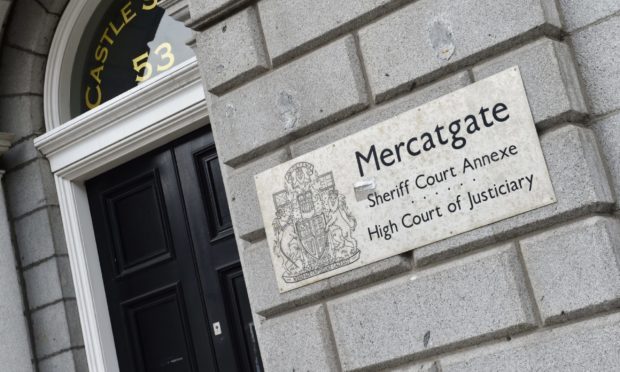Police were able to track down a man accused of rape through a Facebook “friend request” sent to the alleged victim on the night she claims she was attacked.
The woman, who cannot be named for legal reasons, told police she was attacked by Saulius Bauza, of Broad Road in Arvagh, Ireland, after meeting him on a night out in Huntly.
She says the 40-year-old abducted and raped her at a guesthouse on April 7, 2019.
He denies the charges against him, and lodged a special defence of consent in relation to the rape allegation.
The High Court in Aberdeen yesterday heard from detective constable Tanya McCall that the alleged victim had received a Facebook friend request from Bauza on the night she claims she was attacked by him.
Taking the stand on the third day of the trial, which is being heard before a remote jury of eight men and seven women, Bauza claimed it was the alleged victim who took his phone and added him as a Facebook friend while they were outside a club having a cigarette.
He also claimed the woman, who is seen on CCTV leaving and then returning to the guesthouse on two occasions prior to the alleged rape, had been behaving erratically and that he had been “concerned for her” that night.
The doctor who examined the woman after she reported the alleged crime to the police told the court he found injuries “consistent with blunt force trauma”.
Forensic physician Dr Stuart Taylor said two of the wounds were in “an unusual site for accidental injury”.
Dr Taylor noted a total of 11 bruises, red marks and scratches on the woman during a physical examination later in the day she claims she was attacked.
The court had already been shown CCTV footage of the woman and Bauza dancing together that night as well as further videos of them walking through Huntly together.
Jurors were also shown footage of a woman running away from the guesthouse in a towel and falling, as well as another video with the woman walking away from the guesthouse at 4.21am being followed by Bauza.
She received a large cut to her chin as a result of the fall.
The court was shown a printed diagram of a female body with injuries noted on the woman’s abdomen, arms and inner thigh.
Advocate depute Ann Gray asked Dr Taylor to clarify his statement that the injuries found to the alleged victim’s right thigh were “in an unusual site for accidental injury”.
He said: “You often see bruising on people who may have fallen, or knocked themselves or bumped against something, and that tends to be on the outer aspect of thighs or arms.
“It’s much less likely you would injure yourself on the inside of your thighs as a result of bumping into something or having fallen.”
However, cross-examining the witness, defence counsel Leigh Lawrie asked Dr Taylor if he was able to say whether the injuries were “all acquired at the same time”.
Dr Taylor said: “It is not possible to say when they were acquired”.
Ms Lawrie added: “Depending on how she fell, is it possible that any of the other bruises could have been suffered during the fall?”
Dr Taylor responded by stating that “some of the other bruises may been suffered during the fall”.
The trial, before Judge Graham Buchanan, continues.
